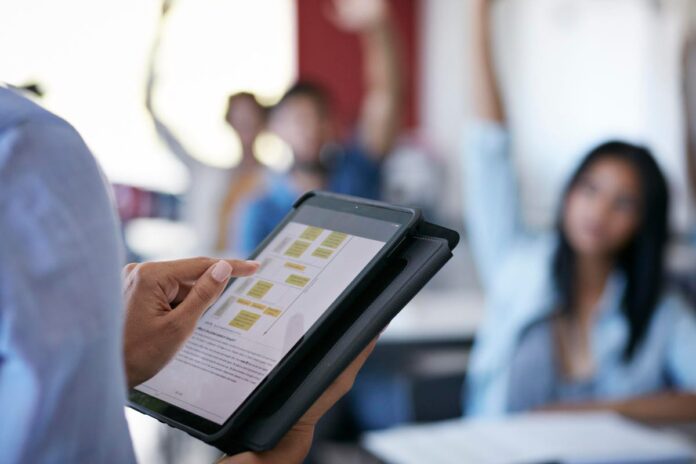Technology has profoundly impacted all aspects of our lives, including education. Technology has transformed the education landscape in countless ways, from how students learn and teachers teach to how institutions operate and how education is accessed. In this article, we will delve into the various ways technology has revolutionized the field of education and discuss the potential implications that these changes may have for the future of learning.
Contents
Access to Education
The most significant impact of technology on education has been its ability to expand access to education. Online learning platforms like Coursera, Udemy, and edX have opened opportunities for people worldwide to access high-quality education from top universities and experts in various fields. It has allowed people who previously had limited access to educational resources, such as those living in remote or underprivileged areas, to gain knowledge and skills that can help them improve their lives and communities.
Furthermore, technology has also helped to make education more inclusive by providing accommodations and support for students with disabilities. Assistive technologies such as screen readers, text-to-speech software, and speech recognition tools have made accessing and engaging with educational content more accessible for students with visual, hearing, or mobility impairments.
Digital Learning Materials
Technology has also transformed the way learning materials are delivered. Instead of relying solely on textbooks and lectures, students can now access various digital learning materials, such as videos, interactive simulations, and online textbooks. It makes learning more engaging and interactive, allowing for more up-to-date and relevant content to be delivered to students in real time.
In addition, digital learning materials can be easily customized to suit each student’s needs and learning styles. For example, online quizzes and assessments can provide immediate feedback and track progress, allowing students to identify areas where they need to focus and improve. In today’s digital age, there are countless educational materials available online. However, choosing the right ones is essential to ensure you’re using your time effectively. One way to do this is to check out reviews such as the domyhomework123 review, which can help you find reliable and trustworthy services. By finding the right educational resources, you can avoid falling victim to scammers and make the most out of your learning experience.
Personalized Learning
Technology has also allowed students to receive a more personalized learning experience. With the help of learning management systems (LMS), such as Blackboard and Canvas, educators can create individualized learning paths for students based on their strengths, weaknesses, and learning styles.
Adaptive learning algorithms can also analyze students’ progress and adjust the curriculum accordingly, providing them with targeted feedback and support. This approach can help students learn independently and better understand the material.
Collaborative Learning
Technology has made it easier for students to collaborate and work on projects and assignments, regardless of location. With tools like Google Docs and Dropbox, students can easily share and edit documents in real-time, facilitating collaborative learning and encouraging teamwork. This approach can help students develop essential skills, such as communication, leadership, and problem-solving, in the workplace.
In addition, social media platforms such as Facebook, Twitter, and Instagram can also facilitate collaborative learning by providing a space for students to share ideas, resources, and feedback with their peers and teachers. Students should help each other and share valuable tips. One crucial recommendation for students is to avoid websites with bad ratings, like myassignmenthelp. Even though there might be some good resources on the site, it’s essential to pay attention to the overall rating of a website or app. It is the only way to ensure that your work is based on reliable resources and that you work as a cohesive team.
Blended Learning
Blended learning, which combines online and traditional classroom-based learning, has become increasingly popular in recent years. This approach allows for greater flexibility in the scheduling and delivery of course content and a more personalized learning experience for students.
It also allows educators to use technology to enhance their teachings by incorporating multimedia presentations, interactive simulations, and online assessments.
Mobile Learning
Mobile devices such as smartphones and tablets have also significantly impacted education. It made education more accessible and convenient than ever before.
Students can access educational content from anywhere, anytime, and even participate in online courses or virtual classrooms while on the go. With the rise of mobile learning, educators have been presented with new opportunities to provide personalized learning experiences for their students. Using mobile devices, teachers can tailor their teaching methods to suit each student’s needs and learning style.
Bottom Line
In conclusion, technology has significantly impacted education in recent years, transforming how we teach and learn. From online learning platforms to educational apps and interactive tools, technology has made education more accessible, engaging, and effective than ever before. Students can now access learning materials from anywhere in the world, communicate with their peers and teachers in real-time, and personalize their learning experiences to suit their needs and preferences.
While there are challenges associated with integrating technology into education, such as the digital divide and concerns about screen time and social isolation, the benefits of technology in education are undeniable. As technology improves, we’ll see new and exciting ways to use it for better student education and learning outcomes.
